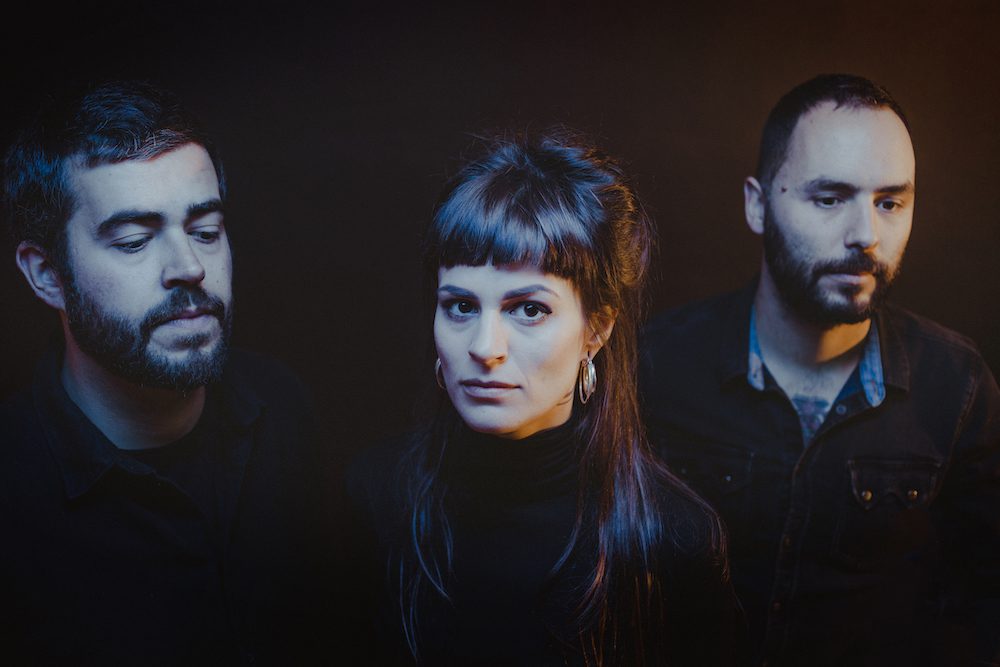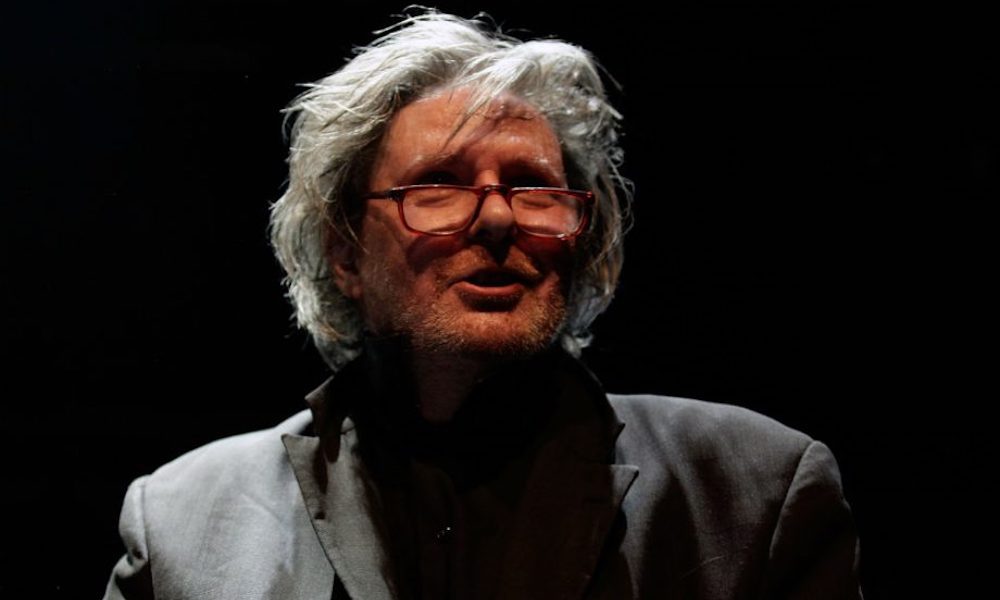
On the one hand, it’s hard to imagine a better venue than Greenpoint mainstay St. Vitus for the stateside return of a band that integrates black metal, punk, and post-hardcore into their dizzying sound. But even if it seemed appropriate on paper, the stifling black box of the venue was hardly enough to contain Belgian trio Brutus, whose towering sophomore effort Nest has easily placed them in the running for many a genre-spanning year-end list. Though the densely packed room and breakneck speed at which they played muffled some of the more dynamic qualities of their recorded output, there was no mistaking the explosive energy of drummer/vocalist Stefanie Mannaerts, guitarist Stijn Vanhoegaerden and bassist Peter Mulders. The force with which they played is practically begging for bigger rooms, better soundsystems, and longer sets allowed to linger beyond the neighborhood curfew.
Opening with atmospheric, disembodied synths, the band humbly took the stage and immediately launched in the slow-burning assault of opening Nest track “Fire.” Mannaerts’ drum kit was situated stage left, facing Mulders in the middle and Vanhoegaerden at house left; her mic was perched over her left shoulder, there to amplify her full-throated howls and yet somehow remain out of the way of her rapidly moving arms. She seemed to perform mostly from muscle memory, pounding out complicated blast beats and thrashing her cymbals as if her life depended on it. Her voice channeled “Human Behavior”-era Björk, the air pushing from her lungs in a raspy, desperate wail.
Vanhoegaerden was mostly stoic, focused on threading raw-nerved guitar through ominous bass and careening percussion; every so often, he’d wander toward Mannaerts’ kit, as if checking to make sure she wasn’t about to keel over from sheer exhaustion (incredibly, she showed little sign of fatigue). Mulders, meanwhile, hammed it up, throwing devil horns and sticking out his tongue after the band nailed more difficult stretches of music. It helped that he is comically tall – for those stuck in the bottleneck by St. Vitus’s soundboard, he was the only visible member of the band. The show was sold out, one of only a few U.S. dates the band had booked around their set at Austin’s Levitation showcase with Sargent House labelmates.
There wasn’t much banter between songs but Mannaerts in particular espoused her thanks at every opportunity – the band seemed truly blown away by the positive response to Nest, not just in the sold-out room, but the world over. After their Los Angeles show at The Echo, they posted a heartfelt message to fans on Facebook, saying, “When we started this band, we had no idea what it would bring for us. We had big dreams, and we thought we were ready. But we were not.” They went on to explain that Nest was written in the wake the initial success they experienced surrounding their debut LP Burst, “for our loved ones, left in the dark at home while we were on the road chasing this weird and unpredictable light.” It was certainly revelatory to bask it its glow, if only for a moment.
BRUTUS TOUR DATES:
11/17 – Mexico City, MX @ Corona Capital
11/24 – Berlin, DE @ Festaal Kreuzberg
11/25 – Köln, DE @ Stollwerck
11/26 – Amsterdam, NL @ Melkweg
11/28 – Leeds, UK @ University Stylus
11/29 – London, UK @ Electric Ballroom
11/30 – Paris, FR @ Le TrianoN
12/03 – Milan, IT @ Alcatraz
12/04 – Ljubljana, SI @ Kino Siska
12/05 – Munich, DE @ Backstage
12/06 – Vienna, AU @ Arena
12/08 – Warsaw, PL @ Progresja
12/14 – Brussels, BE @ AB Brussels (SOLD OUT)


